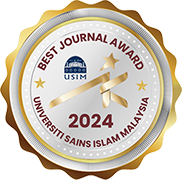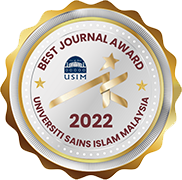JUXTAPOSITION OF RIGHT TO SELF-DETERMINATION AND TERRORISM UNDER INTERNATIONAL LAW
DOI:
https://doi.org/10.33102/mjsl.vol11no2.396Keywords:
right to self-determination, terrorism, National Liberation MovementsAbstract
The right to self-determination is one of the jus cogens law under the international law which denotes the legal right of people to decide their political, economic and social affairs within their borders of a territory. The right essentially gives a license for the people to use force legally in exercising their right to self-determination. However, with the absence of a universally accepted definition on the term terrorism, an issue has been raised on designing National Liberation Movement as terrorist. Therefore, this study is conducted to examine how designing National Liberation Movement as terrorist impacted the exercising of the right to self-determination. The study analyses relevant legal laws and jurist opinions on the issues at hand using a library-based methodology. The result of this study reveals that despite provision for countering international terrorism, the current counterterrorism law is influenced by States municipal law. With a liberal power to define, states have been recorded to design National Liberation Movement as terrorist group to allow them to used municipal law against National Liberation Movement. In short, whilst use of force in exercising the right to self-determination is govern under the international humanitarian law, the lack of universally accepted definition of terrorism caused National Liberation Movement to be designated as terrorist, thus criminalising the liberation movement of the whole group.
Downloads
References
Ahrens, C. B. (2004). Chechnya and the right of self-determination. Columbia Journal of Transnational Law, 42, 575-616.
Akzin, B. (1939). The Palestine mandate in practice. Iowa Law Review, 25, 32-77.
Aljamal, Y. (2014). Hamas: Terrorism organisation or liberation movement. Политикологија Религије (The Politics and Religion Journal), 39-58.
Anderson, G. (2015). Unilateral non-colonial secession and the criteria for statehood in international law. Brooklyn Journal of International Law, 41(1), 1-98.
Annan, K. (2005). Closing plenary of the international summit on democracy, terrorism and security. Keynote Address. Madrid.
Beinin, J., & Hajjar, L. (2001). Palestine, Israel and the Arab-Israeli conflict: A primer. Middle East Research and Information Project.
Benoliel, D., & Perry, R. (2010). Israel, Palestine, and the ICC. Michigan Journal of International Law, 32(1).
Blocher, D. (2011). Terrorism as an international crime: The definitional problem. Eyes on the ICC, 8(1), 107-138.
Cassese, A. (1995). Self-Determination of peoples: A legal reappraisal. Cambridge: Cambridge University Press.
Chadwick, E. (2012). 9/11 and self-determination. Nottingham Law Journal, 21(1), 54-64.
Charney, J. I. (2001). Self-determination: Chechnya, Kosovo, and East Timor. Vanderbilt Journal of Transnational Law, 34(2), 455-468.
Coffin, A. (2014). Self-determination and terrorism: Creating a new paradigm of differentiation. Naval Law Review, 63, 31-66.
Cristescu, A. (1981). The right to self-determination: Historical and current development on the basis of United Nations instruments. New York: United Nations. Retrieved from https://U.N.Doc.E/CN.4/Sub.2/404/Rev.L.U.N.SalesNo.E.80.XIV.3
Darcy, S. (2019). Coming to terms with wartime collaboration: Post-conflict processes & legal challenges. Brooklyn Journal of International Law, 45(1), 75-138.
Davis, B. (2019). Being Uighur.. with "Chinese characteristics": Analyzing China's legal crusade against Uighur identity. American Indian Law Review, 44(1), 81-116.
Dersso, S. A. (2012). International law and the self-determination of South Sudan. Institute for Security Studies (South Africa)(231).
Fan, H. (2007). The missing link between self-determination and democracy: The case of East Timor. Northwestern University Journal of International Human Rights, 6(1), 176-195.
Goodrich, L. M., Hambro, E., & Simons, A. P. (1969). Charter of the United Nations: Commentary and documents. Third and Revised Edition. American Journal of International Law, 65(1), 434 - 435.
Gray, C. (2018). International Law and the Use of Force (4 ed.). Oxford University Press.
HAMAS Information Bureau. (2007). Al-Kitab Al-Abyad, amaliyah hasm ti qito’ Gaza idhtiror la ikhtiyar [Gaza dalam pelukan Hamas]. Jakarta: Center for Middle East Studies.
Hilpold, P. (2017). Self-determination and autonomy: Between secession and internal self-determination. International Journal on Minority and Group Rights, 24(3).
Ijezie, C. (2013). Right of peoples to self-determination in the present international law. SSRN Electronic Journal. doi:10.2139/ssrn.2304441
Ismail, I. (2014). Analysis towards state responsibility in the gross violation of human rights at Balibo, East Timor based on international law. US-China Law Review, 11(2), 168-181.
Jan, M. N. (2011). Use of force in international law. Ampang: CLJ Publication.
Kadir, M. A. (2015). Revisiting self-determination conflicts in Indonesia: An international law perspective. Indonesia Law Review, 5(2), 123-139.
Laqueur, W. (1999). The new terrorism: Fanaticism and the arms of mass destruction. New York: Oxford University Press.
Leonard, L. L. (1949). The United Nations and Palestine. International Conciliation (455), 607-786.
Library of Congress Washington DC Congressional Research Service. (2007). International reaction to the Palestinian Unity Government. Washington DC: Library of Cogress.
Loevy, K. (2016). Reinventing a region (1915-22): Visions of the Middle East in legal and diplomatic texts leading to the Palestine mandate. Israel Law Review, 49(3), 309-338.
Maras, M.-H. (2013). Counterterrorism. Burlington: Jones and Bartlett.
Mbuzukongira, G., & Sahinkuye, M. (2018). Recognition of national liberation movements in international law. Tuma Law Review, 5, 40-63.
Melzer, N. (2008). Targeted killing in International Law . New York: Oxford University Press.
Moeckli, D. (2008). Human rights and non-discrimination in the 'War on Terror'. Oxford: Oxford University Press.
Muhammadin, F. M. (2015). Terrorism and the crime of aggression under the Rome Statute. Jurnal Mimbar Hukum, 27(1), 128-144.
Obradovíc, K. (2000). International humanitarian law and the Kosovo crisis. International Review of the Red Cross(839).
Pentassuglia, G. (2017). Self-determination, human rights, and the nation-state: Revisiting group claims through a complex nexus in international law. International Community Law Review, 19(4-5), 443 - 484.
Recent International Advisory Opinion. (2010). International Law Unilateral Secession International Court of Justice concludes that Kosovo's Unilateral Declaration of Independence did not violate international law accordance with International Law of Unilateral Declaration of Independence in respect. Harvard Law Review, 124(4), 1098-1105.
Rupérez, J. (2007). The United Nations in the fight against terrorism. 132nd International Senior Seminar Visiting Experts Paper Series(71), 18-20.
Sabbagh, J. A. (2021). The right to self-determination of modern secessionist movements under international law. International Review of Law, 10(2), 285- 302.
Said, E. (1989). The challenge of Palestine. Journal of Refugee Studies, 2(1).
Saul, B. (2006). Defining terrorism in international law. Oxford: Oxford University Press.
Shaw, M. N. (2017). International law (8 ed.). Cambridge: Cambridge University Press.
Simpson, G. J. (1994). Judging the East Timor dispute: Self-determination at the International Court of Justice. Hastings International and Comparative Law Review, 17(2), 323-348.
Strating, R. (2014). The Indonesia-Timor-Leste Commission of Truth and Friendship: Enhancing bilateral relations at the expense of justice. Contemporary Southeast Asia, 36(2), 232–261.
United Nations. (2006). Quartet Statement. London: United Nations.
US Department of Treasury. (2006). Palestinian authority. Retrieved from https://www.treasury.gov/resource-center/sanctions/Programs/Pages/pa.aspx
Varko, R. (2005). The status and protection of unlawful combatants. Juridica International, 10, 191-198.
Vyver, J. D. (2010). Prosecuting terrorism in international tribunals. Emory International Law Review, 24(2), 527-548.
Yau, S. S. (2018). The legality of the use of force for self-determination. The Palestine Yearbook of International Law, 21, 32-76.
Downloads
Published
Issue
Section
Categories
License
Copyright (c) 2023 Farzanah Selamat, Hendun Abd Rahman Shah, Norfadhilah Mohamad Ali

This work is licensed under a Creative Commons Attribution-NonCommercial 4.0 International License.















































